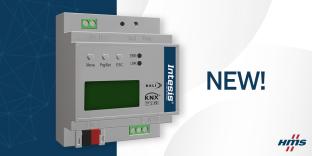Major cities such as Berlin are ‘energy guzzlers’ and responsible for around 80 percent of worldwide greenhouse gas emissions. Hence, it is particularly important that energy consumption be stemmed there. To this end, Berlin is particularly creative and pioneering and has come up with a number of ambitious ideas. One of them is the ‘Energy Strategy Berlin Adlershof 2020’ at the renowned Adlershof Science and Technology Centre in the southeast of the city. Together with partners from research and business, the operators want to increase the energy efficiency of the site through the use of innovative technologies. The aim is to cut the consumption of primary energy at Adlershof by 30 percent by 2020.
A challenging target because the project encompasses 450 buildings in different states of repair, over 900 companies, 16 scientific institutions and 23,000 people who not only research, study and produce but also live there. And: Adlershof continues to grow!
Adlershof is Europe’s biggest inner-city development area. On an area of 467 hectares where Otto Lilienthal took off for his first powered flight and the GDR Academy of Sciences was to be found until 1989, there is a mixture of modernised precast-concrete buildings, protected and decaying buildings, award-winning glass architecture, futuristic biotechnology, photovoltaic, optics, information-technology and microsystem-technology research laboratories, as well as the modern lecture theatres of the Humboldt University. Over the years until 2020, a new ‘Campus Residential Area’ will be built on 14 hectares of the area. Dr Beate Mekiffer of WISTA Management, the operating company, is in charge of the entire energy project: “The demand for primary energy is expected to rise from 360 at present to around 825 gigawatt hours if no action is taken to stop this development. In other words, the situation is extremely urgent!” The German government is also aware of the problem and is sponsoring ‘Energy Strategy Berlin Adlershof 2020’, a cluster project that is unparalleled anywhere in Germany.
At Adlershof, the focus is on building efficiency and intelligent electricity grids on both existing and new developments, which does not make things any easier. On the contrary, it means unifying both existing and new exhibitors. Dr Beate Mekiffer: “All concerned are very interesting in using energy efficiently. Hence, in cooperation with Berlin Technical University and the local power-supply company, we have already been able to demonstrate the potential for greater efficiency on selected buildings.”
According to the analysis, the energy consumed by the lighting would be almost halved if just the lighting systems at Adlershof were to be modernised. Therefore, motion detectors with electronic sensors will be used to manage the lighting in future. Additionally, dimmers will be fitted so the brightness of the interior lighting can be controlled intelligently in accordance with the time of day.
Particular attention is being paid to the construction of the planned ‘Campus Residential Area’. Around 100 of the 1,300 apartments are to be built in a plus-energy estate where more energy will be generated than used. To this end, the plans call for a high-performance solar plant and cogeneration for decentralised power supply. Moreover, Berlin Technical University and partners are looking at the integration of a smart-grid solution for an intelligent power supply system.
A great potential for cutting power consumption is also seen at facilities with energy-intensive research processes, e.g., the Max Born Institute for Nonlinear Optics and Short Pulse Spectroscopy (MBI) and the Humboldt University with its scientific institutes. All need a lot of energy for cooling. The obvious solution is to improve and network cooling plants and integrate them into energy stores, which would permit the intensive use of peak production from renewable energies. One idea is to store hot or cold water from near-surface aquifers and make demand-oriented use of it. The energy could be stored, for example, in salt solutions (hygroscopic brine), which absorb a lot of moisture at the same time as releasing heat for drying and air-conditioning processes.
In addition to saving energy, the operators are also banking on the increased use of regenerative energies. To date, Adlershof has primarily used photovoltaic systems. In the future, they will be supplemented by geothermal energy, wind energy from the surrounding countryside or decentralised cogeneration plants. Dr Beate Mekiffer: “We are working closely together on all these aspects with scientists in Austria and Switzerland, who are also researching into the energy-saving potential of model districts. The ‘Energy Strategy Berlin Adlershof 2020’ will play a pioneering role in this direction.”
At Light + Building from 30 March to 4 April 2014, around 2,300 international manufacturers will show their latest products and innovations for the fields of lighting, electrical engineering, house and building automation and software for the building industry. They present market-ready technologies that not only cut energy consumption but also increase user comfort. Additionally, a special show entitled ‘The Smart Powered Building – Your Building in the Smart Grid’ will illustrate the importance of buildings for converting to a decentralised energy supply. Organised by Messe Frankfurt and the German Association of the Electrical and Electronics Industry (Zentralverband Elektrotechnik- und Elektronikindustrie e.V. – ZVEI), the special show explains how energy-generation plant, energy stores and intelligent networks communicate with each other to achieve the best results for the consumer. Continuing this train of thought, the E-House of the Central Association of the German Electrical and Information Technology Trades (Zentralverband der Deutschen Elektro- und Informationstechnischen Handwerke – ZVEH) in Hall 8 demonstrates what forms intelligent energy management can take in private dwellings. This ‘energy-saving power station’ shows extremely realistically how the new energy paradigm works in practice and how energy efficiency can nowadays go hand-in-hand with increased comfort and safety. Moreover, thanks to their own energy generation, it is possible to reduce the degree of dependence on power-supply companies.














